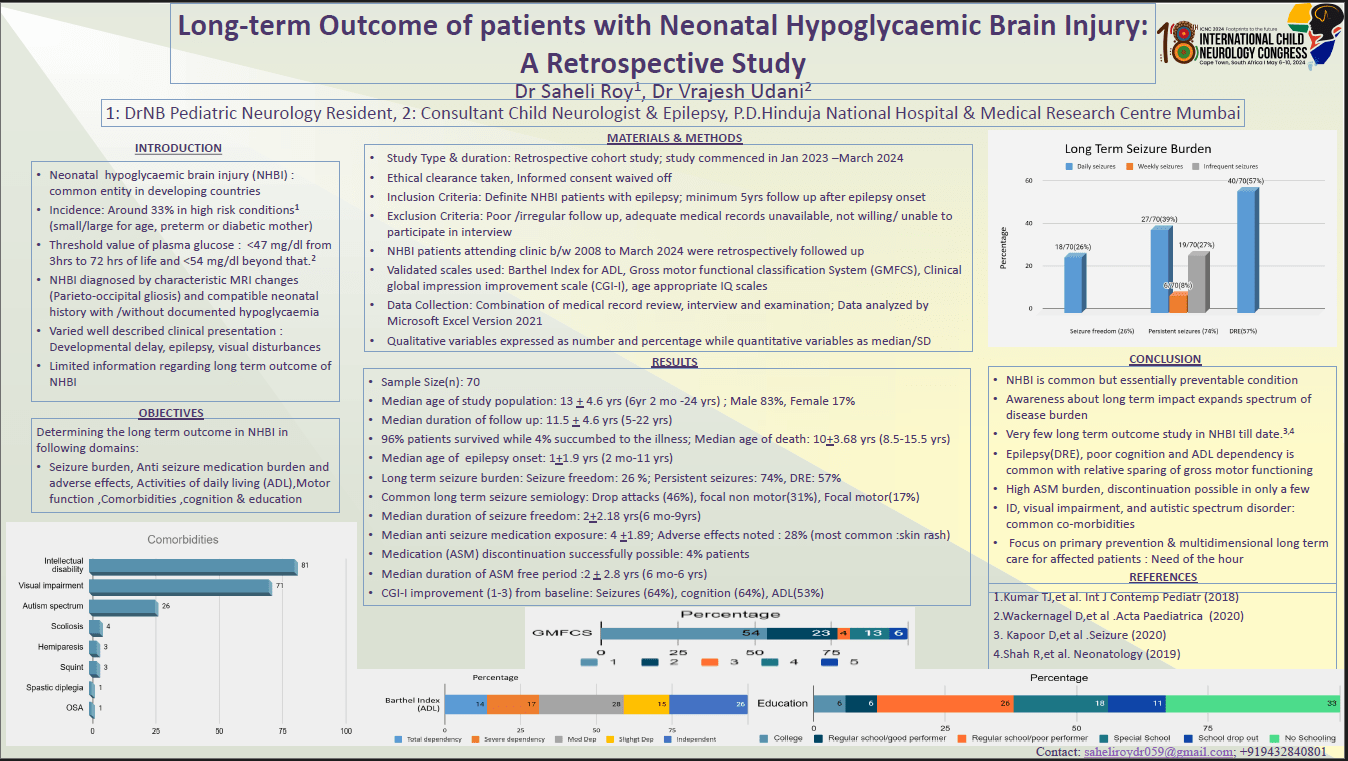Long-term Outcome Of Patients With Neonatal Hypoglycaemic Brain Injury: A Retrospective Study
Introduction: Neonatal hypoglycaemic brain injury (NHBI) is common in developing countries leading to varied clinical presentations like epilepsy, visual disturbances, neurodevelopmental disorders, and intellectual disability (ID). Though substantial information is available about clinical presentation, knowledge is limited regarding long-term outcome. Thus, we conducted this study with the aim of finding out its long- term outcome in different domains. Methods: We conducted a retrospective cohort study in a tertiary centre of Mumbai. 50 NHBI patients were retrospectively followed for long term outcome at minimum 5 years after epilepsy onset. Recruitment for the study is still going on and we aim to achieve a sample size of 100. Data was collected by combination of: medical records review, telephonic/ videographic interview and direct examination, aided by a proforma. Relevant validated scales were used. Results: The median follow up duration was 12.5 +-4.75 years(5-22years). 28% patients achieved seizure freedom while seizures continued in 72%. 76% patients were dependent on caregivers for activities of daily living (ADL) as assessed by Barthel Index. 44% patients had good motor function, 26% had significant motor disabilities .84% patients had ID, 52% had visual impairment and 18% had autism. 6% patients succumbed at median age of 10 +-3.68 years (Table1). Conclusion: NHBI is a common yet preventable condition with devastating short and long-term clinical outcome. Gross motor function is relatively less affected compared to cognition, ADL, and epilepsy burden. This study paints a greater picture of NHBI and prioritizes the need of multidimensional care and primary prevention. Disclosure: None
Saheli Roy
P.D.Hinduja National Hospital & Medical Research Centre
India
Vrajesh Udani
P.D.Hinduja National Hospital & Medical Research Centre
India
